This Model Makes Energy Storage Accessible for People of All Incomes


Rooftop solar and battery energy storage can help households deal with rising power prices and increasingly frequent outages tied to natural disasters. But solar and storage systems are economically out of reach for many people — particularly those who would benefit most from the extra help on their monthly bills.
Electriq Power is looking to close the gap by partnering with municipalities and nonprofits to make solar and energy storage systems available to residents of all income levels.
"We try to make it the same for each and every one, whether you're the wealthiest person in a community or the lowest-income person in the community," said Frank Magnotti, CEO of Electriq Power.
Powering California communities with solar and energy storage at no money down
Electriq Power partners with municipalities to offer solar and energy storage solutions to their residents. Electriq provides all hardware, software and services — including solar panels and batteries, as well as smart battery software, installation services and grid connectivity.
The company also lends its marketing prowess to help municipalities get residents signed up, but the programs are branded by the city or town — providing further assurance to residents. "The municipality provides a really key link here," Magnotti said. "The homeowners get the confidence that this program has been vetted by the municipality."
The program is open to homeowners, as well as renters in multifamily units whose landlords have opted to participate. Residents can opt into the program with no upfront cost, no credit checks and no property liens. And 25-year power purchase agreements, provided by Electriq and vetted by participating municipalities, allow residents to power their homes with solar for about 20 percent less than what they pay for their typical energy bill.
"They're getting a free battery on top of that — and again, at no money down — so it's a pretty strong program for low-income communities who would not be able to afford this," Magnotti said.
Electriq has three of these programs up and running in Parlier, Santa Barbara and San Luis Obispo, California, where participating households are connected to form solar microgrids that Electriq calls sustainable community networks, or SCNs.
Within these networks, Electriq's PowerPod 2 battery systems are connected to rooftop solar installations as well as the local energy grid. Solar panels charge the batteries during the day, and smart battery software deploys that power back into the home during peak demand times to insulate the household from sharp spikes in power pricing. Bringing energy independence to more households also helps reduce the burden on the local energy grid, making it better equipped to handle demand fluctuations and capacity constraints.
Along with accessing energy at cheaper and more predictable prices, residents also gain peace of mind in knowing their homes will still have power in the event of a local outage.
"What is not known by a lot of people is that if you have solar and the grid goes out, you can't use your solar," Magnotti said. "But if you have a battery system that works with the grid, you can then keep on [using] the solar and storage without the grid being there at all."
The programs are catching on fast. More than 1,000 residents have expressed interest in Santa Barbara County's home power program since it launched in October of last year, Magnotti said. Electriq is looking to establish more community solar networks across California, backed by $300 million in financing from an unnamed U.S. clean energy company secured in March.

Working with nonprofits to bring more solar and storage online
Electriq also helps nonprofits create solar and energy storage programs in the communities they serve. In Puerto Rico, the company is the sole service provider for the nonprofit Barrio Eléctrico, which works to bring solar and storage systems to low-income residents in the coastal town of Isabela, about 70 miles west of San Juan.
Similarly to how the home power programs function in California, Isabela residents can opt into rooftop solar and battery energy storage with no upfront cost.
The batteries' off-grid functionality is particularly compelling for an island that's frequently affected by storms and extreme weather. After Hurricane Fiona struck last fall, "our homes were the only ones that had power," Magnotti told us. The company has also been in touch with the Federal Emergency Management Agency (FEMA) about how to use its battery systems for emergency support, he said.
Further, using stored power during peak times can significantly lower household energy bills — another huge plus for the island, where electricity rates are among the highest in the U.S.
The company provides services to SEDC Solar for a similar program that makes solar and storage accessible to homes, churches, and businesses in some of the lowest-income neighborhoods of Washington, D.C.
A triple win for residents, municipalities and the private sector
In March coverage of Electriq, Anne Fischer, senior editor of the solar-focused publication PV Magazine USA, breaks down how all parties benefit from this type of model. "Electriq or another financial party own the battery, and they get the federal tax credit," she wrote. "The benefit to Electriq, or other third-party, is that they can use the battery at specified times to send power to the grid."
Meanwhile, residents get the benefit of purchasing solar power at a cheaper price than conventional power — lowering their bills and reducing the carbon footprint of their home energy use, while also knowing they can maintain power in the event of an outage.
The model is, of course, not a panacea that can solve all of a community's decarbonization and grid stability challenges, with limited availability for renters being a clear gap to fill. But when coupled with other solutions like community solar — which allow renters to share solar power from community installations — home power programs like those from Electriq can help cities to decarbonize, enhance grid resilience, and offer lower and more stable energy prices to their residents.
"What we pride ourselves on is this automated software where the customer gets very involved if they want and can change things on an hourly basis, or you can kind of set it and forget it," Magnotti said. "The key is: How do you have software that makes it easy for the consumers? They don't have to think that much, but it still provides these benefits for them."
Image credits: Simone/Adobe Stock, Kindel Media/Pexels and Electriq Power
Target Gets a Second Chance on LGBTQ Rights


Leading U.S. retailer Target disappointed human rights organizations earlier this year when it failed to push back against a wave of aggressive anti-LGBTQ behavior related to its Pride Month merchandise. Now Target has another chance to get it right, and the stakes are high.
Target backs down when anti-LGBTQ activists come calling
Anti-LGBTQ activists confronted staff at several Target stores in May, during the runup to Pride Month. Instead of pushing back, Target removed the offending displays. “Target is pulling some LGBTQ merchandise from stores that it rolled out for Pride Month after confrontations with customers,” Jessica Guynn of USA Today reported on May 23.
Guynn cited a statement from Target, in which the company referred to “threats impacting our team members’ sense of safety,” as well as "volatile circumstances” and “confrontational behavior” that influenced its decision to remove merchandise.
That decision was roundly criticized by hundreds of human rights groups in a letter organized by the Human Rights Campaign on June 5. However, some saw it as a case of better safe than sorry. The confrontations at Target go beyond the actions of a few scattered individuals. They reflect a dangerous environment of anti-LGBTQ entitlement leading to physical attacks on LGBTQ events and individuals. That includes confrontations sparked by the white supremacist organization Proud Boys, a group the Justice Department has connected to the failed insurrection of January 6, 2021.
This environment of entitlement has built up over years of sustained, state-sanctioned attacks on LGBTQ rights. Critics say former President Donald Trump imprinted anti-LGBTQ activists with approval from the highest office of the land throughout his tenure ending in 2020. That was followed by a fresh torrent of state-based anti-LGBTQ legislation in 2021, on the heels of the January 6 insurrection.
New anti-LGBTQ legislation has been cropping up ever since, including a rising tide of book bans directed against LGBTQ authors. That also includes anti-ESG (environmental, social and governance) legislation, which leans heavily on the “woke capitalism” canard to stop businesses from pursuing diversity, equity and inclusion goals.
State attorneys general double down on hate
Social media has also played a key role in raising the profile of anti-LGBTQ activists. The social media effect burst into full flower in April when activists aimed their fire at a promotional relationship between the trans actor and influencer Dylan Mulaney and the Bud Light brand of AB-InBev.
Rightwing commentators including Matt Walsh said the social media campaign against Bud Light aimed to "make ‘pride’ toxic for brands," Fortune's Ellen McGirt reported. Guynn of USA Today quoted another such activist, who wrote on Twitter: "Target deserves the Bud Light treatment. We will work to put the pressure on them."
Seven state attorneys general — representing Arkansas, Idaho, Indiana, Kentucky, Mississippi, Missouri and South Carolina — appeared to get the message.
On July 5, they issued a joint public letter to Target CEO Brian C. Cornell that all but threatens legal action unless Target stops selling any “potentially harmful” products to minors. “As the chief legal officers of our States, we are charged with enforcing state laws protecting children and safeguarding parental rights. … In light of these responsibilities, we wish to communicate our concern for Target’s recent ‘Pride’ campaign,” they wrote.
This goes way beyond Pride
The letter sparked a wave of media attention, much of it focused on several products that the attorneys general singled out for removal. However, the letter is far more interesting for its recommendations on what to put in, not what to take out.
“It is likely more profitable to sell the type of Pride that enshrines the love of the United States,” they recommended. “Target’s Pride Campaign alienates whereas Pride in our country unites.”
“We live in a different day and age from our nation’s founding. But certain immutable precepts and principles must always endure so long as America is to remain free and prosperous,” they admonished.
As for what type of products and images reflect “love of the United States” and “immutable precepts and principles,” the letter leaves that up in the air. It does, however, strongly suggest that removing all LGBTQ symbolism from products is just the first volley in an attack on any kind of image that appears to be “anti-Christian.”
“Target also sold products with anti-Christian designs, such as pentagrams, horned skulls and other Satanic products,” the attorneys general note.
More fact-free legal action from the usual suspects
The anti-Christian accusation is sensational, but it appears to be woven out of thin air. The letter apparently refers to images in a weeks-old social media post that were identified as fabricated back on June 2, yet here they are popping up again in an official letter from seven state attorneys general.
Spotting “anti-Christian designs” where there are none is just one more example of the fact-free thinking that has come to characterize policy-making by many Republican office holders from the Supreme Court on down. It’s no surprise to find the same mindset at work elsewhere in the letter, where the attorneys general attempt to show that Target’s Pride campaign was an abrogation of its fiduciary duty to stock holders.
“The evidence suggests that Target’s directors and officers may be negligent in undertaking the ‘Pride’ campaign, which negatively affected Target’s stock price,” they charge.
That’s news to Wall Street analysts. Target's stock was on the downswing long before the Pride controversy, falling 32 percent in 2022, according to an April analysis posted on Forbes. The analysis, conducted by Trefis, linked the company's wavering stock price to “a slowing economy, supply chain worries and shifting consumer sentiment,“ along with inventory issues and higher logistics costs.
By May, MarketWatch discerned a spark of good news. “After a difficult 2022, when Target was one of the more highly visible examples of the inventory glut that plagued retailers last year, the benefits of being cleaner were notable in the [company's first quarter 2023] report,” D.A. Davidson analyst Michael Baker wrote on the platform.
Bringing the news up to date on July 6, the investor organization Motley Fool was even more optimistic. “Target is dealing with major sales and earnings challenges stemming from a sharp demand shift away from merchandise categories that were booming during the pandemic,” observed Motley Fool reporter Demitri Kalogeropoulos, who completely ignored the steamy rhetoric from anti-LGBTQ activists. “Yet inventory levels are down, potentially setting the business up for a solid rebound over the next few quarters."
If Target learned anything from Pride Month, it’s that nothing will satisfy anti-LGBTQ activists, whether it's an unhinged individual loudly confronting a store clerk or a phalanx of state attorneys general quietly issuing letters. The best defense is a good offense, as the saying goes. And the retailer has a real opportunity to change its tune.
Image credit: Daniel ODonnell/Unsplash
This Free Audi Program Gives Auto Technicians the Skills to Work on Electric Vehicles
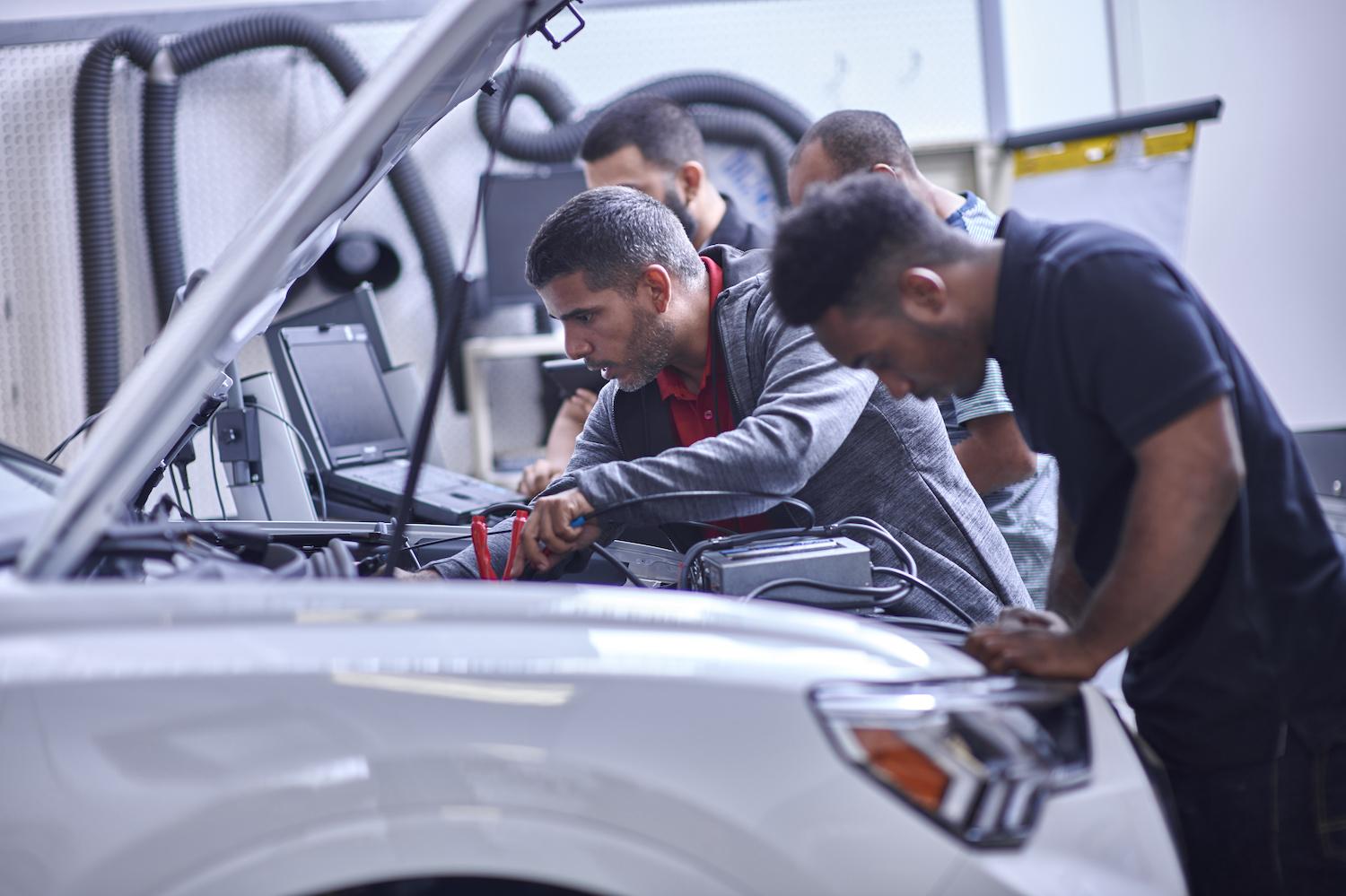
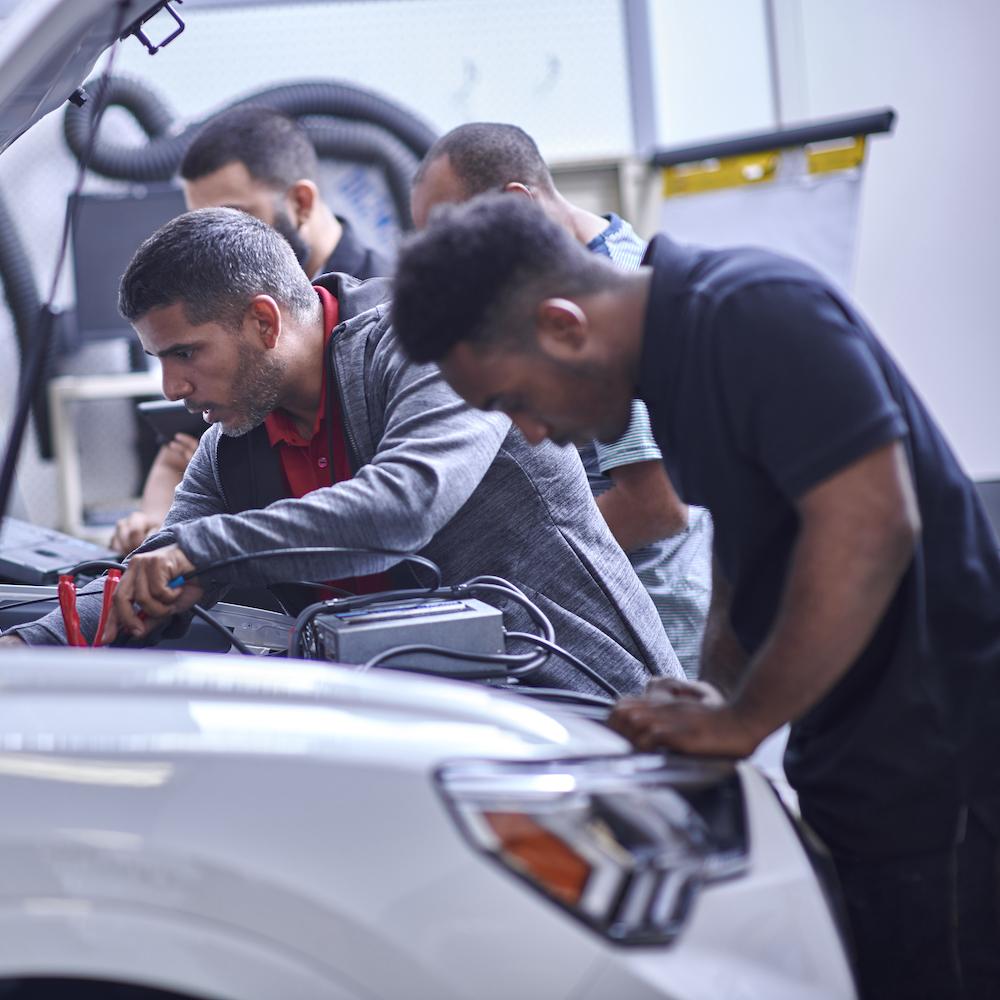
As the market for electric vehicles grows, so too must the number of automotive technicians with the appropriate skills to work on EV powertrains.
Electric vehicles generally require less routine maintenance than those powered by internal combustion engines. But that doesn’t mean EVs are simple machines without their own unique servicing requirements.
For example, when you take into account the individual control modules for each battery cell and the intricate software that connects everything on an EV drivetrain, “that’s very complex, way more complex than for previous models,” Brian Stockton, senior director of technical services and training at Audi of America, told TriplePundit.
Such EV-specific technical differences require automotive technicians to develop new skillsets in order to look after these vehicles. Recognizing how needs are changing, Audi is looking to train new people to service its growing portfolio of electrified cars, Stockton said.
The timing is crucial. At the same moment the number of electric vehicles on the road is growing, the baby boomer generation is retiring out of the workforce, taking away a significant number of older automotive technicians from dealerships.
Audi of America developed its Audi Education Partnership (AEP) to meet this moment of a looming skills shortage. This in-house program is designed to attract the next generation of auto technicians. It gives participants a job and an education at the same time and, most importantly, does so at no cost to the student.
A new workforce for electric vehicles: Audi’s plan to train EV-competent auto technicians
Audi's program focuses on candidates who have some grounding in automotive training at the outset. “We looked at the National Automotive Technicians Education Foundation (NATEF) certification and said, 'That’s our baseline,'” Stockton said.
This certification, administered by the Automotive Society of Engineers (ASE), is an industry-standard qualification for a career as an automotive technician. Since EVs and conventionally-powered cars have many common components and systems, Audi considered this certification necessary before students could embark upon the next step.
That next step involves gaining access to Audi’s online courses, which the company makes available through partnerships with 64 accredited schools across the U.S. Students must work through 72 web-based modules and pass an assessment after each one.
Students can take as long as they want to work through these modules, during which time “there is no associated cost,” Stockton said. Some students might work to gain their NATEF certification at the same time they are working through Audi’s content. Once they complete both of these prerequisites, “that’s the ticket to get into AEP,” Stockton said.
When students enter the AEP program, “We take their name, their location and we merge them with a dealership that’s looking for a technician,” he said. “We put the two together, the dealership hires the student, and then they are officially in a very defined 18-month program.”
The ultimate goal for participants is to reach “expert level” — the midpoint of five skills tiers Audi recognizes within its dealerships. “Expert level is really the heart of it,” Stockton said. “If someone gets to expert level, they could spend their entire career here and be very effective and be able to perform all repairs.”
Before Audi launched AEP, a technician might attain expert level within the company’s dealer network in three to six years, or more. But the new program is specifically designed to accelerate the process. It combines day-to-day work at a dealership — where students earn an hourly wage — with eight weeks of offsite training at one of Audi’s 11 learning centers around the country.
The eight weeks of in-person, instructor-led sessions are spaced out over the duration of the AEP program in one-week increments. Each participant is placed into a class of 12 students from around the country. Those same 12 come together each time and are typically rotated through five to eight of those Audi learning centers. Students also work through more of Audi’s web-based content over the 18-month period of the program.
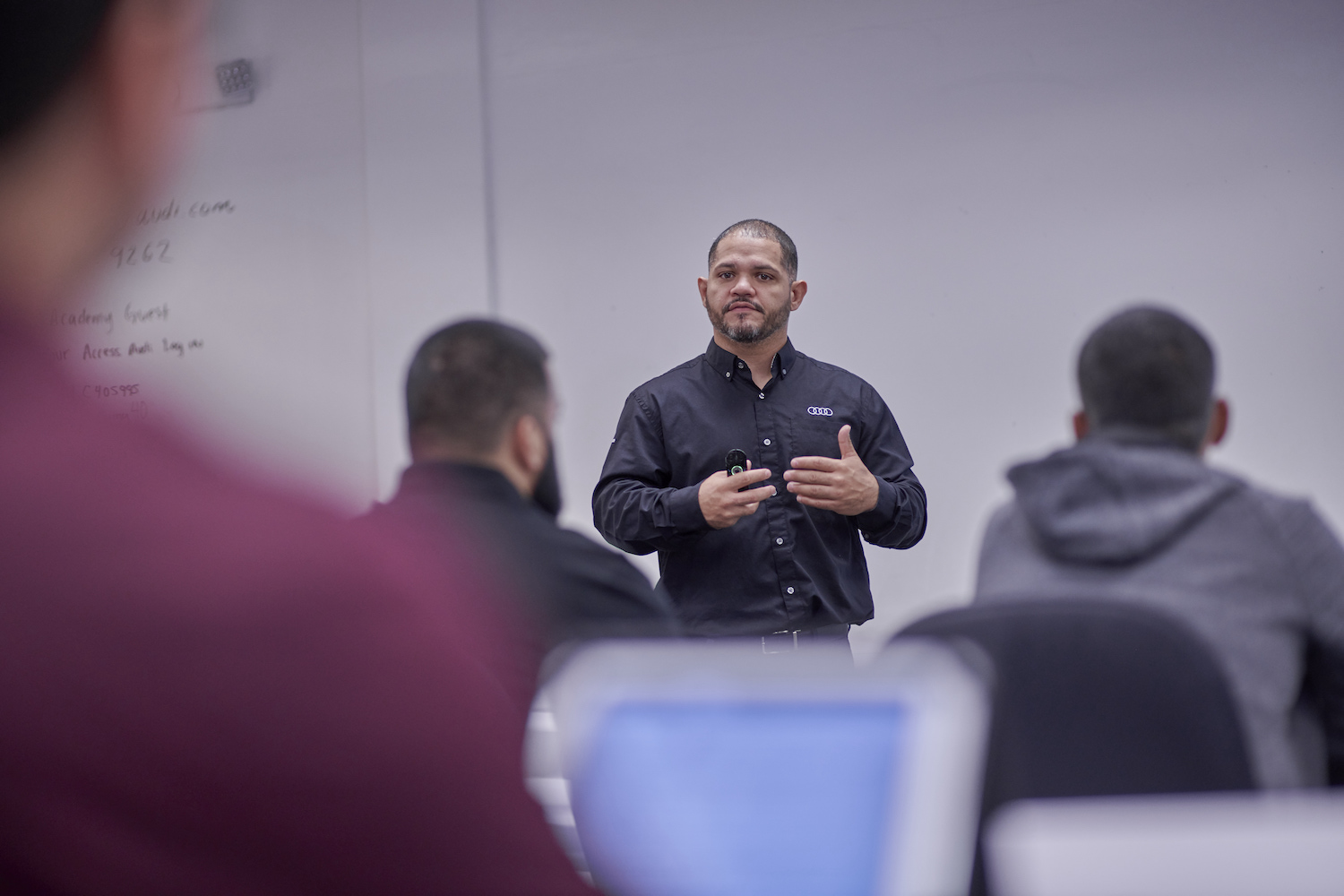
Upon graduation, they are qualified to service electric vehicles at the expert level. “They’re taking batteries out of vehicles, going through all the diagnostics,” Stockton said. “There’s nothing they can’t do to our vehicles at that point.”
The program has piqued interest from a new type of candidate, he said. “We still attract people who like to work with their hands, who like to tear engines and transmissions apart. But what’s new about this with EVs, we’re attracting people who are really engaged in the diagnostic and analytical mindset.”
Audi also has a program for existing veteran technicians to make sure they are not left behind when it comes to EV technology. “We have our Advanced Diagnostic Training course that we launched to help get the rest of our technician base — that are interested — ready for this,” Stockton said.
Measuring success
Around 130 students graduate from the AEP program each year, and the company’s investment in people is already paying off.
“[When] we look at technician retention at our dealers ... in general we lose 30 percent after six months,” Stockton said. “But if we look at this program, we lose less than 4 percent.”
This is a win on multiple levels, he said. Graduating students are more committed to the brand, and the dealers benefit from their service staff having access to accelerated training. Audi benefits, too, because carefully trained technicians enhance the customer service the company can provide. Given the early success and scalability of AEP, Stockton concluded simply, “We’re going to continue with this model.”
Images courtesy of Audi
Electrifying Agriculture and Construction, One Machine at a Time
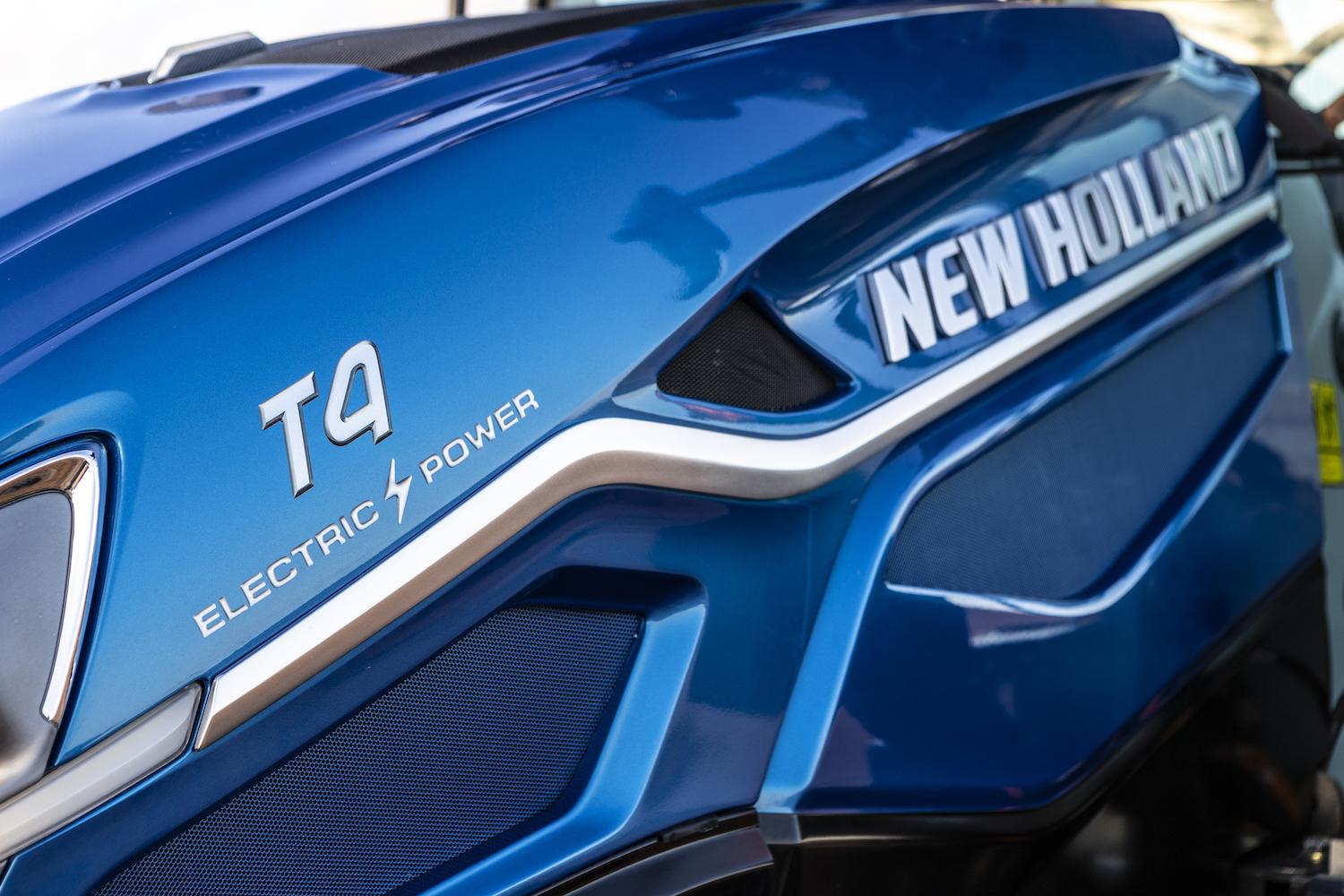
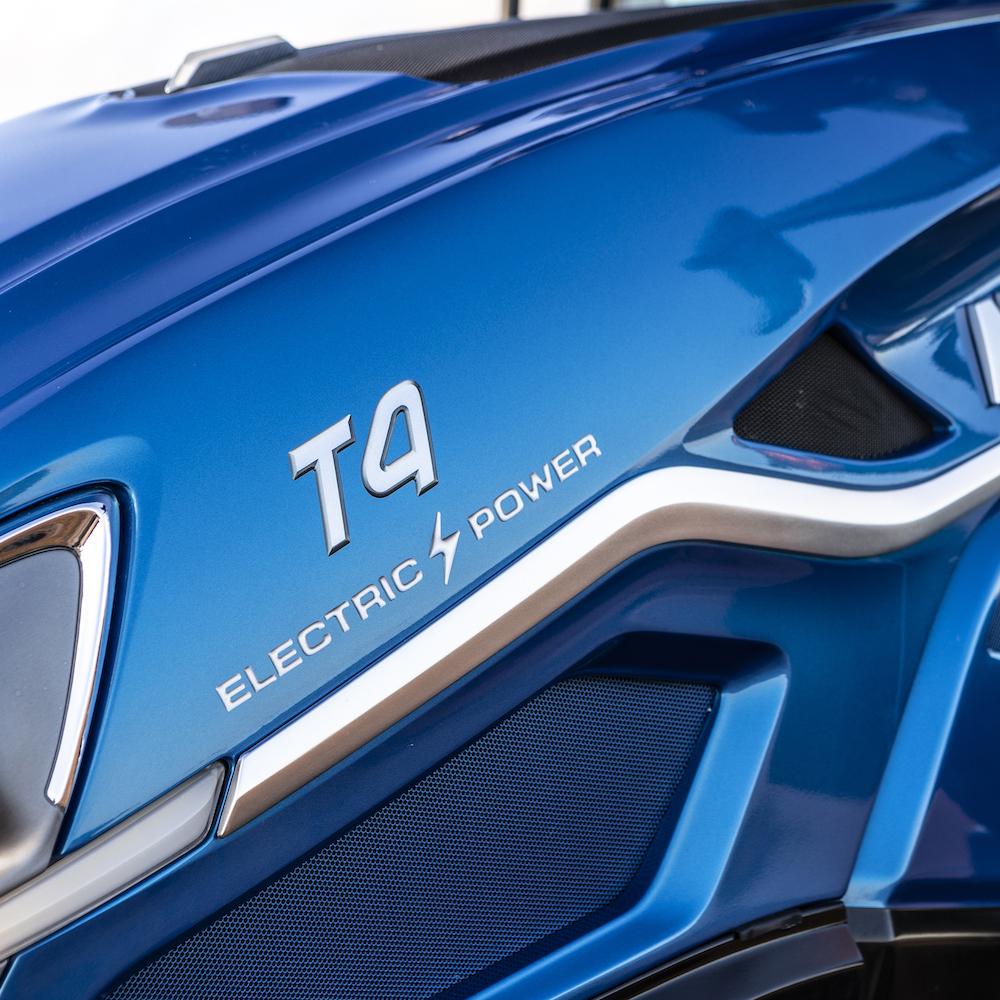
CNH Industrial worked with Monarch Tractor to create the New Holland T4 Electric Power, an all-electric utility tractor with zero tailpipe emissions.
With their reliance on massive combines and other large pieces of diesel-powered equipment, the agriculture and construction industries present a major challenge for electrification. Nevertheless, suppliers are beginning to offer electric options, and the global firm CNH Industrial illustrates how careful strategizing can yield rapid results.
A head start on electrification
The Electrification Portfolio Management team is a relatively new addition to CNH Industrial as the electrification industry picked up steam over recent years. The sector’s rapid rise has enabled CNH Industrial to recruit talent from a deep pool of accomplished electrification experts.
“Now that the technology is known, there is a well-defined supply chain and expertise in the market, we decided to look at the market and bring in that expertise,” said Mario de Amicis, head of the CNH Industrial electrification team.
Knowing both the customer and the technology is another foundation of the company’s strategy. While some firms have gained publicity by electrifying massive pieces of machinery, CNH Industrial assessed the demand for relatively small, lightweight utility tractors, taking particular note of the specific benefits that electrification would bring to customers.
Collaborating to accelerate electrification
Another leg of the strategy involves forming partnerships with experienced electrification companies, helping to accelerate the timeline from concept to market. For its inaugural electric tractor project, CNH Industrial enlisted the U.S. firm Monarch Tractor as a strategic partner.
The result was a prototype version of the T4 Electric Power, an all-electric utility tractor for CNH Industrial’s New Holland Agriculture brand. The prototype was produced in record time and unveiled at the company’s tech day event in Phoenix, Arizona, in December 2022.
A production model will extend to CNH Industrial’s Case IH brand as well, where the company has also introduced an all-electric mini-excavator.
Electric vs. diesel vehicles: Compare and contrast
Around 70 percent of the CNH Industrial’s electrification team comes from the automotive industry, de Amicis said. That experience shows up in T4 features that have become standard fare in electric vehicles, including battery range that can last up to a day depending on the type of work. Another key element is fast-charging capability: a bi-directional charging system enables the tractor to provide power to electric tools (such as welding machines and drills) and function as a generator for emergency or daily use.
The commercial version of the T4 will launch with remote and autonomous features. Similar to those in other electric vehicles, these elements are expected to result in significant productivity improvements.
“Farmers can remotely activate the tractor via a smartphone app,” the company detailed in a recent announcement. “Shadow Follow Me mode lets operators sync machines to work together. A 360-degree perception system detects and avoids obstacles. Telematics and auto guidance keep all functions in check for operators.”
CNH Industrial also took care to incorporate a power take-off feature and other standard elements for attaching implements to a tractor, with a high-tech twist. The T4 comes with a fleet management controller that recognizes and links the attachments, enabling farmers to run the tractor remotely through all stages of use.
All the benefits of electrification
As with all electric vehicles, the T4 eliminates tailpipe emissions and offers a significant savings on operating costs. CNH Industrial estimates a savings up to 90 percent over the cost of fueling and maintaining a diesel engine. The electric drive also delivers improvements in responsiveness, traction control and all-around handling, according to the company.
In terms of agricultural use, the electric tractor eliminates the risk of soil contamination from spills or accidents, de Amicis said. That’s an especially important consideration for regenerative agriculture, which prioritizes soil health.
On a more holistic basis, regenerative practices also prioritize worker health, making a zero-emission tractor all the more attractive.
The T4 reduces noise by up to 90 percent, according to company estimates, and tamps down on vibrations, too. That’s a significant improvement in the well-being of both workers and farm animals, while lessening disturbance for nearby neighbors.
Similar benefits are at work in CNH Industrial’s electric mini-excavator. It is sized to enable it to pass through doorways and conduct work indoors, free of the diesel fumes and noise of conventional equipment.
Next steps for decarbonization
CNH Industrial also offers farmers a methane biofuel option for New Holland’s T7 and T6 tractors. These models are a particularly good fit for livestock farms with digester equipment, which extract biogas from manure.
“Farmers grow crops and use waste products to generate biomethane, which powers the tractor, which, in turn, helps to grow those very crops,” New Holland’s website reads.
Electrifying combines and larger pieces of equipment involves another set of challenges. Here, CNH Industrial is focusing on a hybrid strategy to satisfy customer demand for both performance and efficiency, while also achieving a sharp reduction in carbon emissions, de Amicis said.
“Battery-electric, with no combustion, is a really good application for small machines,” he explained. “But when we move up, we know that — due to the limit of the power density and cost of the battery — we need to talk about hybridization for medium to large machines.
Much of the equipment attached to farm and construction vehicles is driven by hydraulic systems, which lend themselves to electrification.
“Electrification is an opportunity for efficiency,” de Amicis said. “A tractor is pointless alone. It is intended to pull and provide energy for something else — for implements. There is a lot of opportunity because of the hydraulics in implements, and if we move to electrification, we can improve controllability.”
Beyond EV batteries
As much as CNH Industrial and other firms have been helped along their electrification journey by the size and maturity of the on-road electric vehicle market, further progress in the off-road area will require a tailored approach.
The next step involves forming new supply chain partnerships to develop a battery designed specifically for high-voltage systems, de Amicis said. “We can’t simply copy and paste what the automotive industry is doing. Due to the specific requirements linked with our environment, a customized solution is required."
The decarbonization of the agriculture and construction industries is only just beginning. But equipment suppliers such as CNH Industrial are poised to overcome the technology challenges and accelerate the transition away from fossil energy.
This article series is sponsored by CNH Industrial and produced by the TriplePundit editorial team.
Image courtesy of CNH Industrial
Community-Powered Food System Brings Plant-Based Fare to New York’s Bodegas


It might be the unlikeliest of places to find a plant-based egg sandwich, but for Nil Zacharias, founder and CEO of Plantega, New York City’s bodegas made perfect sense for his deli-in-store company. On a mission to make plant-based food more accessible, Plantega is changing the face of these iconic New York corner stores one sandwich at a time.
Today Plantega is located in over 44 bodega locations across New York City as well as on the food delivery platforms UberEats, DoorDash and Grubhub. A recent menu expansion saw the initial eight items grow to more than 62 dishes. Plantega items make up over 20 percent of deli counter sales at the participating bodegas, Zacharias says, and as much as 60 percent on weekends at some locations.
“Bodegas are typically the last place you go to find any healthy or sustainable good. Yet they are a lifeline in New York City, often the only place you can food within walking distance, or late at night," he says. "If you run out of an essential item or want to grab something on the go, bodegas fill that need, so they have a critical place in the fabric and culture of New York City."
The idea for Plantega emerged out of the pandemic in the summer of 2020 when hundreds of restaurants closed. Zacharias saw the opportunity for bodegas, as essential businesses, to fill the gap in the food industry. Now, they represent a new kind of distribution channel for plant-based foods that can reach consumers faster and empower small business owners.
“We decided to lean into what made bodegas great, which is that they are pretty quick, convenient and iconic, but also empower the small business owner to embrace the foods of the future by making it easy for them to do that,” he says. “And it’s a way to make plant-based foods available in places where people would least expect to find it.”
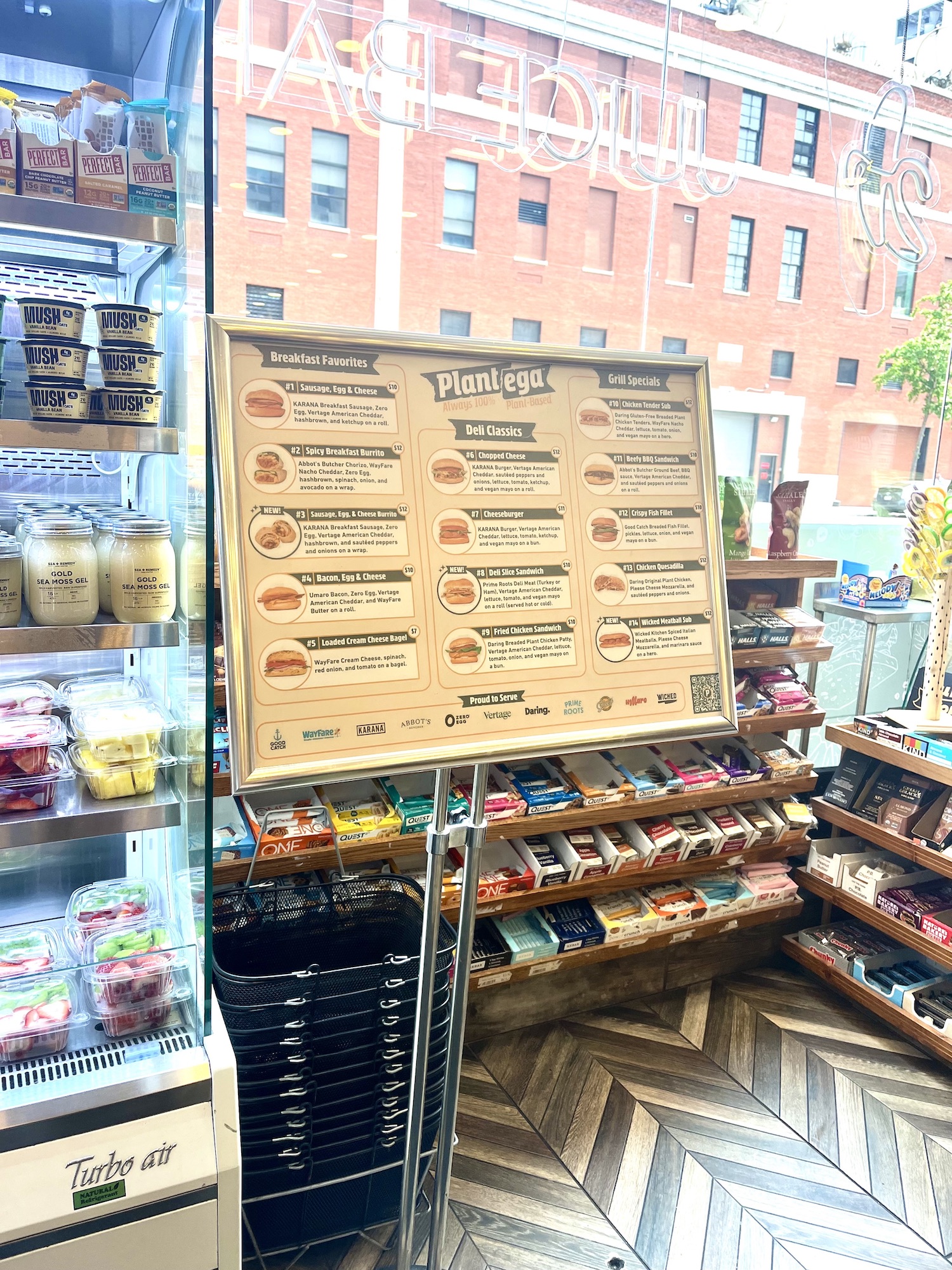
Making it easy for small businesses to invest
Using a turnkey model, Plantega allows bodega owners to start selling a premade menu of plant-based sandwiches in store, featuring products from partner brands like Zero Egg, Beyond Meat, Good Catch and Miyoko’s Creamery.
The concept is taking hold. Plantega sold more than 102,000 plant-based sandwiches and generated over $900,000 in revenue for local stores last year, Zacharias says. Those numbers topped 67,000 sandwiches and $700,000 in store revenue during the first quarter of 2023 alone. “In just three months, we sold over half of what we did in 12 months prior and reached nearly the revenue we generated in an entire year,” he says.
Plantega's approach not only helps small businesses expand their offerings with minimal effort, but it also gives plant-based brand partners a way to trial new products and scale distribution.
“The whole idea is to nudge someone who shops in that location to want to choose something that's plant-based,” Zacharias says, as he explained in more detail in the Eat For The Planet Podcast.
“We want to seamlessly fit in the environment in which the food is being sold, yet stand out as this attractive option," he says. "Even if you've never really wanted to try plant-based food, you'll see photos of our sandwiches or our attractive-looking menu right alongside the regular menu in the bodega, and hopefully you might be curious about it enough to make a choice.”
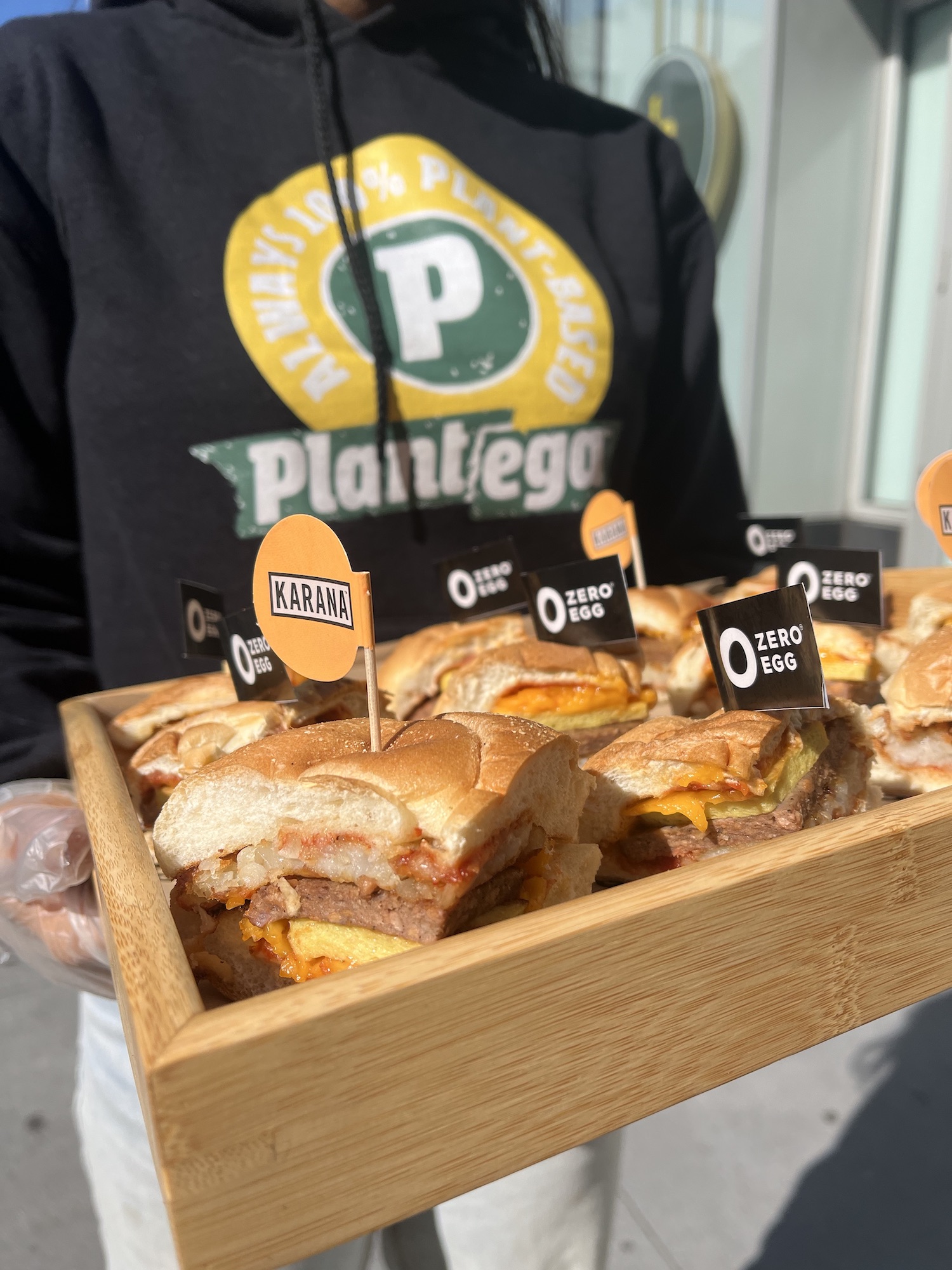
Tackling distribution barriers for plant-based food
It can be difficult for plant-based foods to get a foothold in the traditional retail and foodservice environment. Zacharias points to the hundreds of new plant-based brands, all wanting to get product trials and distribution in a retail and foodservice environment that is highly competitive and complex. The current food industry infrastructure has a number of barriers that deprive customers of the abundance of plant-based products on the market, he says.
“Retailers, restaurants, or institutional foodservice dining are generally hesitant to make any shift away from what's already working for them and selling, and if they do, the ramp-up time is pretty slow,” he adds.
Yet, given the obstacles, “the fact that plant-based foods are still growing is a miracle," he goes on. "That tells you that people are hungry for more sustainable foods, because the food system is really set up against it."
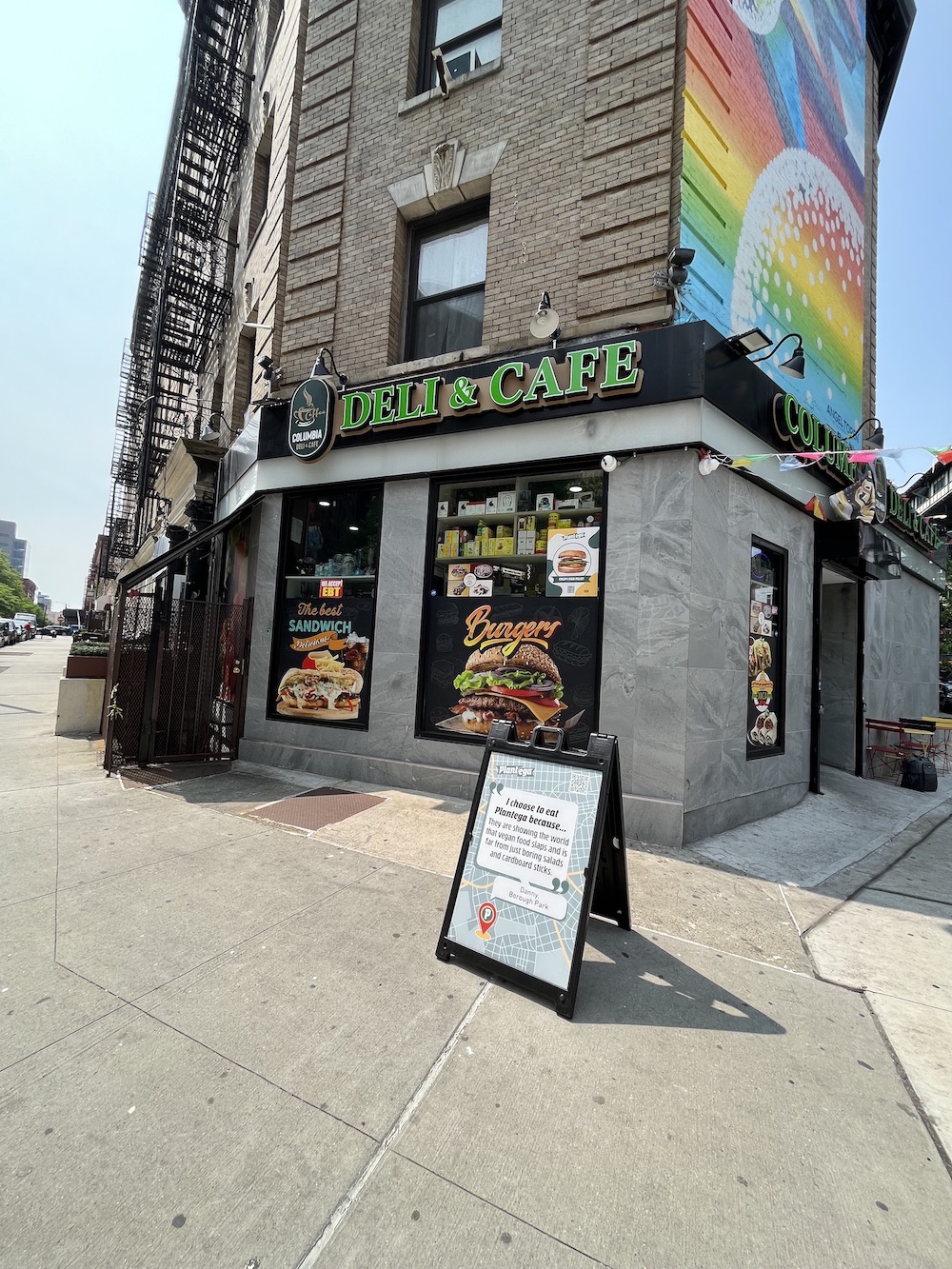
A win-win solution for bodegas and brands alike
Zachrias likes to describe Plantega as a "community-powered" food system. “The core of our model is all about mutual benefit, about reciprocity."
For bodega owners, the model is a win-win and offers several advantages. “We’re offering them a plant-based menu in a box, in essence," he says. "It is a concept you can plug into any functioning kitchen and start operations immediately. We help them pitch Plantega as a concept, train the cooks to prepare the food to meet our standards, and set the store up with distribution so they can order the products that are used in our menu at a competitive rate."
At its core, the system relies on bodegas doing what they do best, while giving them new options to explore. “The beauty of our model is that we don't tell them to change. We're just an add-on to what they're already doing," he says. "Our value proposition for them is that the barrier to entry is really low, which means the risk for them is very low. But if it works, the reward is really high. While our ingredients like our plant-based meats or eggs are higher priced for the owners than the meat-based alternatives, they're also sold at a slightly higher margin, and so they make more money selling the plant-based menu that we provide than they do their conventional menu.”
For food brands that want to pilot and scale new products, Plantega has proven to be an attractive concept. “They are widening their footprint and their sale possibilities in New York City — and, especially the emerging brands, what they really want is for consumers to taste their products and become aware of them. And we are helping to drive that in a pretty organic way.”
In short, Plantega is attempting “to democratize access to healthy, sustainable, plant-based food by empowering independent corner stores across New York City and several neighborhoods that lack access to healthy food," he says.
Making sustainable choices easier
Every choice matters in the need to make our current food system more sustainable, Zacharias argues. “Every effort to change our conventional food system, whether it’s organic food or regenerative food or plant-based, comes down to a question of choice. If we have the option of the better choice, we could change the food system.”
Still, selecting from a range of food choices that could be considered more sustainable is “a privilege that not everyone shares," he says. Around 19 million Americans live in so-called food deserts, which means they have limited access to affordable, fresh food in their neighborhoods.
"While I wouldn’t say our primary motivation in launching Plantega was to transform food deserts with more healthy food, I do think we definitely playing a small role in highlighting the problem and being a part of the solution," Zacharias says. "We're creating financial incentives for convenience stores to carry and sell quality, healthier and more sustainable food that's marketed in a culturally-relevant way so people can choose something they would otherwise not have access to. And that may open up people’s minds to perhaps seek out healthier alternatives down the line.”
Images courtesy of Plantega
Dick’s Sporting Goods Champions Youth Athletics With $5.6 Million in Grants


Carmelo Anthony is known for many things: three-time Olympic gold medalist, NBA legend spanning almost two decades, entrepreneur, activist and philanthropist, just to name a few. The role he credits for making all this possible, though, is his time as a youth basketball player at his community center.
“My story … started at the courts at the rec centers of my neighborhoods in Red Hook and Baltimore, with the friendships I’ve made there, and the mentors I’ve had along the way,” Anthony said in a statement from the Dick’s Sporting Goods Foundation. “And I like to do my part in sharing my story and encouraging the younger generations that anything is possible.”
Anthony is one of 10 Nike/Jordan athletes partnering with the foundation to champion youth sports through a program called 75for75.
The initiative commemorates Dick’s Sporting Goods’ 75th anniversary by offering 75 grants for $75,000 each to youth sports programs across the United States. Each of the partner athletes nominated an organization to receive a grant. Throughout the summer, the athletes are sharing stories of how youth sports changed their lives through videos on Dick’s Sporting Goods’ website, YouTube and social media channels.
Nine athletes across various sports join Carmelo Anthony in the campaign, including women's soccer star Alex Morgan, NFL wide receiver Davante Adams, Olympic track and field runner Athing Mu, and MLB All-Star alum Mike Trout.
“We believe everyone, and especially every kid, deserves a chance to play and experience all that sports provide,” Aimee Watters, executive director of the Dick’s Sporting Goods Foundation, told TriplePundit. “We selected these 10 athletes because they each have a passion for uplifting the next generation of athletes and their communities.”
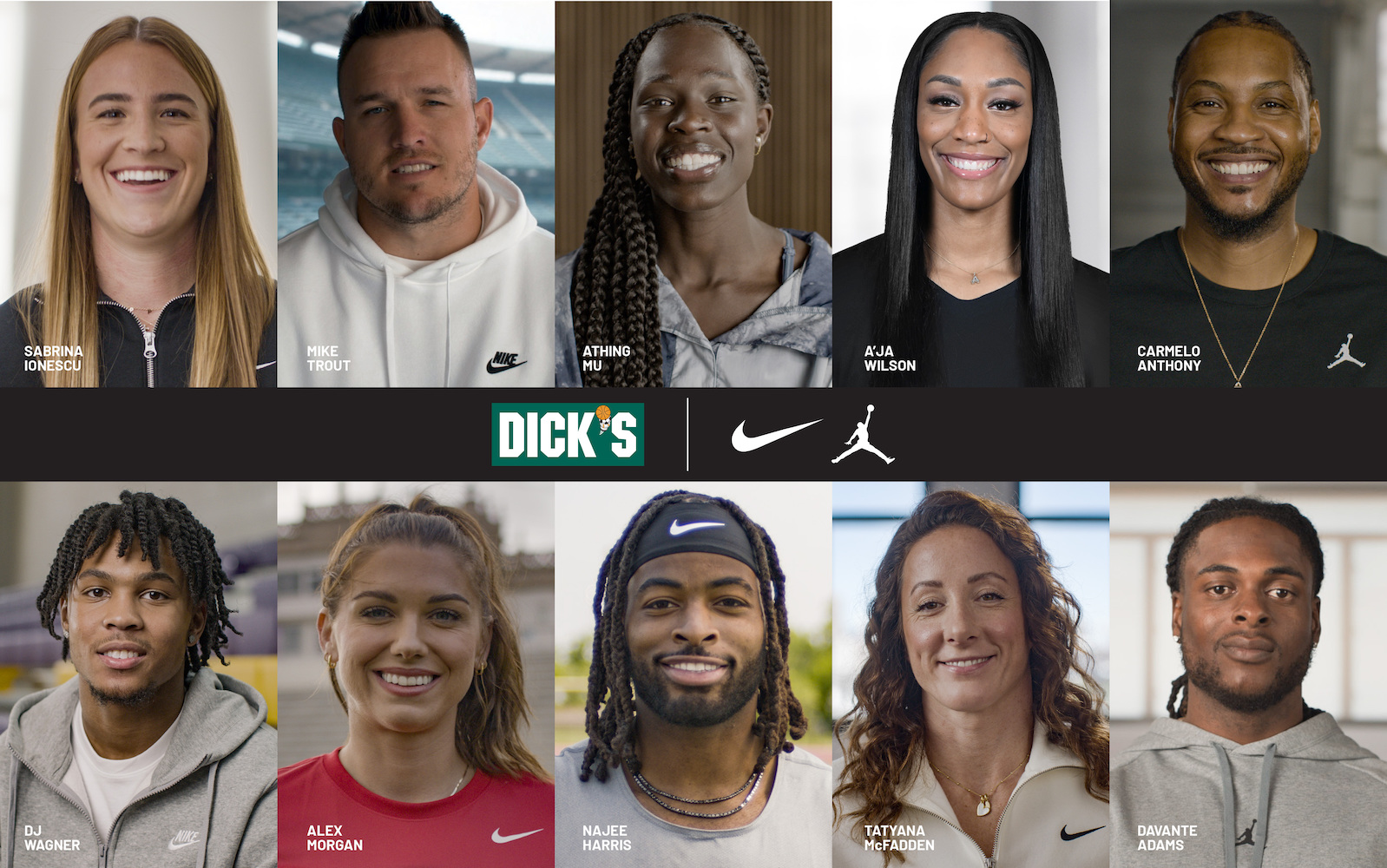
“Sports Change Lives” — especially for kids
The 75for75 grants are part of the foundation’s larger message that “sports change lives.”
“In addition to physical and mental health benefits, sports have the power to change our perspectives, our character and our communities for the better,” Watters said. “But not everyone has the same access to play.”
Financial limitations are some of the most common barriers to entry for youth sports. As of fall 2022, families spent an annual average of $882 for one child’s primary sport, according to the Aspen Institute. Registration fees alone cost an average of $168.
Most local youth sports programs are run by volunteers and have extremely limited budgets. And 63 percent of public school sports’ budgets are stagnant or decreasing, according to a 2019 report by the Rand Corporation.
To help bridge the funding gap and get more young people involved in sports, Dick’s will distribute more than $5.6 million in 2023 through the 75for75 program.
Backing youth sports from coast to coast
Westinghouse Academy received the first grant. The high school is located in Pittsburgh’s Homewood neighborhood, approximately 30 miles from the Dick’s Sporting Goods headquarters in Coraopolis.
Since then, grants were awarded to high schools in Mississippi, New Jersey and North Carolina, a figure skating program in Harlem, New York, and a soccer club in Massachusetts, among others. Each recipient chooses how to use the $75,000 to best address their athletes’ needs, whether that is staffing, facilities, equipment, tutoring, nutrition, programming or something else.
And, as Anthony said, the opportunities provided by these funds will extend far beyond the court or field.
“I know firsthand just how vast the impact that sports can have on a young person's life,” he said. “By providing these grants, we can give these kids from similar backgrounds and stories like mine the opportunities and support to overcome adversity and believe in themselves through the power of sports.”
Image credits: Nina Lawrenson/peopleimages.com via Adobe Stock and DICK'S Sporting Goods